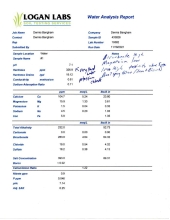




Live free or die trying.
 1
1








 1
1




 2
2





 2
2




List of Bryant RedHawk's Epic Soil Series Threads We love visitors, that's why we live in a secluded cabin deep in the woods. "Buzzard's Roost (Asnikiye Heca) Farm." Promoting permaculture to save our planet.




Medicinal herbs, kitchen herbs, perennial edibles and berries: https://mountainherbs.net/ grown in the Blue Mountains, Australia
 1
1








Iterations are fine, we don't have to be perfect
My 2nd Location:Florida HardinessZone:10 AHS:10 GDD:8500 Rainfall:2in/mth winter, 8in/mth summer, Soil:Sand pH8 Flat




S Bengi wrote:1)
4)Get some woodchip, then some microbes/fungi that can extract minerals from salty soil. Once the microbes are established, they will become the plants root and trade minerals for sugar from the tree.
 1
1




 1
1




 1
1





|
It is no measure of health to be well adjusted to a profoundly sick society. -Krishnamurti Tiny ad:
Learn Permaculture through a little hard work
https://wheaton-labs.com/bootcamp
|



